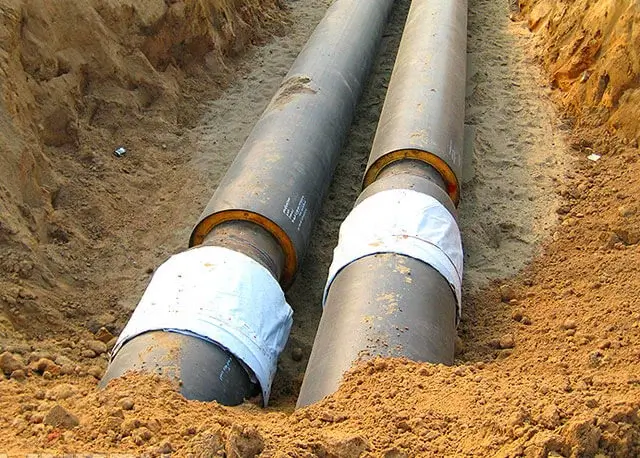The construction of gas pipelines is, without exaggeration, a task of national importance. Gas is energy and heat, gas is needed always and everywhere. Especially in our country, given its size and the most varied climatic conditions. The main requirements during construction are ensuring the required volume of supplies, reliability and safety.
The gas pipeline itself is the main part of the gas pipeline complex. The basic characteristic of a gas pipeline is the maximum pressure under which the "blue fuel" is being pumped. The main gas pipelines of class I, designed for pressure up to 10 MPa, gas from the fields is transported over long distances through pipes of large diameter (up to 1420 mm). Further, the gas is distributed through medium-pressure gas pipelines, directly to end consumers, for example, in residential buildings, gas is supplied through low-pressure communications.
The main ways of laying gas pipelines are underground, underwater, aboveground, aboveground. The choice of this or that method is dictated primarily by the conditions of the area through which the "string" passes, and by security issues.
In the underground method, gas pipes are laid in pre-arranged trenches. The advantages of the underground method are reliability, protection from "weather whims", as well as from "unauthorized connections", minus - high cost.
As an alternative, today the trenchless method using equipment for HDD - horizontal directional drilling is increasingly being used. This allows you to significantly reduce both construction costs and installation time. At the same time, when laying the gas pipeline, roads and railways are not "disturbed", and the gas pipeline itself easily "bends" around obstacles in its path.
Underwater laying large diameter pipes.
When laying a gas pipeline "in the open air", ground and aboveground methods are used, in the second case, the gas pipeline pipes are installed on special supports. In both cases, protection from temperature extremes, precipitation, wind, and in some cases from excessive sunlight should be provided.
Low pressure gas pipelines, through which gas is delivered to its end consumers, industrial enterprises and residential buildings, are divided into external and internal ones, passing directly inside the buildings. The main criteria are the same: reliability and safety. For this, the outer pipes are installed at a certain height and attached to the facades of the buildings. And with "internal" laying, it is not allowed to install pipes inside the walls and any "decoration" of them. For maintenance work, specialists must have constant access to the gas supply system.
The laying of new gas pipelines, the reconstruction and modernization of existing ones is a work that in Russia does not stop, as they say, for a minute. The Zagorsk Pipe Plant takes an active part in this. A significant share of the products supplied to the market by the Moscow Region enterprise is made up of steel pipes for oil and gas trunk pipelines.




